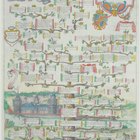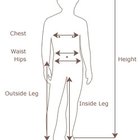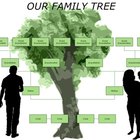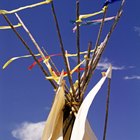
You might wonder how many descendants one of your ancestors who lived 100 years ago has now or how many descendants you will have in 100 years. The difference in the answers may surprise you! Your ancestor 100 years ago may have had 12 or more children. It is likely that only 10 of these children would live to have children of their own. Your ancestors needed many children to help with the day to day tasks or chores, and children born before the age of modern medicine often died from disease. Today people are waiting longer and having fewer children or not having children at all.
Step 1
Count the number of generations back to an ancestor who lived 100 years ago. Going back in time, you'll find that people started families younger. It is not uncommon for some to find five generations in the past 100 years, although four will be an average for this example. Conversely, your future generations will wait longer to have children; therefore, expect only three generations in the next 100 years.
Step 2
Estimate the number of children. Looking back to your ancestor, find out approximately how many children each family had. For this example, use an average of 10 children for the first generation, five children for the second generation and three children for the third and fourth generation. For your generation and going into the future, two children for each generation would be average.
Step 3
Calculate the data by multiplying the number of children by themselves for each generation. Use this format because you expect each child to have children for all successive generations. Using the average of four generations for the past 100 years, you would calculate as 10 children X 5 children X 3 children X 3 children = 450 descendants. This is many more descendants than the calculation for the next 100 years with three generations. Calculate this as 2 children X 2 children X 2 children = 8 descendants you will have in 100 years. The differences between your ancestor's descendants and your descendants is 442 people, lowering the population quite a bit over the next 100 years.
Related Articles

What is the Typical American Family?

Shoe Sizes Explained

What Does Big Kids Mean in Shoe Sizing?

How to Calculate the Number of Wedding ...

How to Calculate Your Native American ...

How Much Whole Grain Should You Eat a ...

How to Access a Securepak Phone Number

How to Measure Kid's Chest Size

How to Convert Women's Shoe Sizes to ...

Grilled Mahi Mahi Calories

How to Make a Family Tree for the 5th ...

How to Blanch & Peel Hazelnuts

How to Freeze Empanadas

How to Calculate the 4th Degree of ...

How to Measure Shoe Width Size

How to Give a Written Analysis of a ...

How to Obtain a Choctaw Indian Roll ...
Calories in Candied Walnuts

How to Make Toasted Bread Sticks With ...

How Much Money Does a Refugee Get from ...
Resources
Writer Bio
Jeannette Piecznski has been a professional genealogist, lecturer and author since 1994. She is a current IIGS Texas Genealogy Instructor, LoneStar Genealogy Manager and a member of the APG, International Society of Family History Writers and Editors and Genealogical Speakers Guild. Piecznski has designed and sewn costumes for many productions and customers. She specializes in heirloom christening gowns and historical clothing.
Photo Credits
Hemera Technologies/AbleStock.com/Getty Images